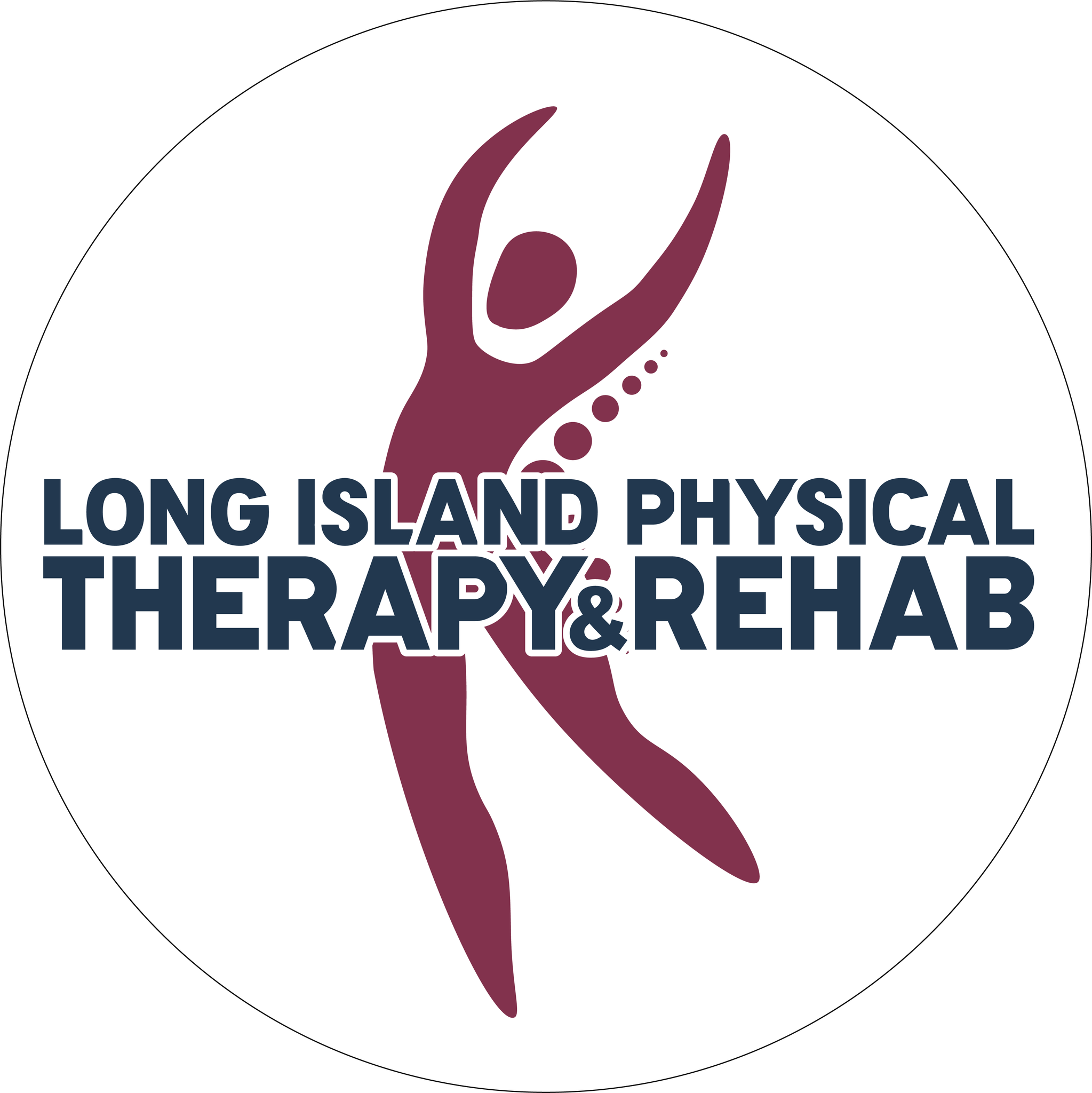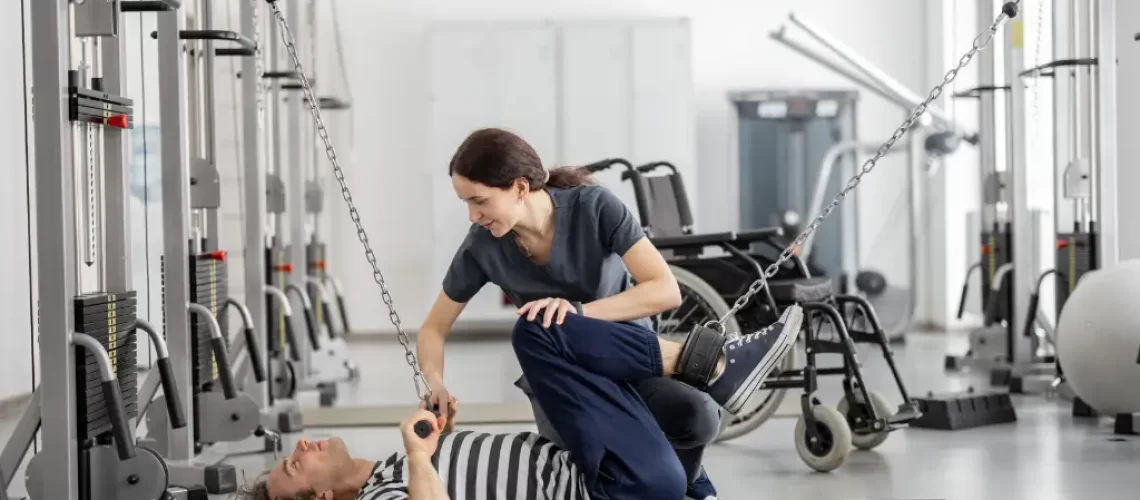Knowing what to wear during physical therapy is crucial for a successful session. Proper attire can contribute to your comfort, mobility, and overall experience. Wearing the right clothes allows your therapist to assess your movements accurately and provide appropriate treatments. Opt for loose-fitting garments that enable easy movement.
Choose breathable fabrics like cotton to stay cool and prevent excessive sweating. Supportive athletic shoes are essential to ensure stability and avoid foot discomfort. By dressing appropriately, you can maximize the benefits of your physical therapy session and focus on your recovery. Remember, your attire plays a significant role in optimizing your physical therapy journey.
Why Does What to Wear at physical therapy Matter?
When it comes to physical therapy, what you wear does matter. Why is that? Well, let me explain it to you in easy terms.
Firstly, wearing the right clothes can help your therapist accurately assess your movements and body alignment. Loose-fitting clothing allows them to observe your joints and muscles more easily. So, choose comfortable clothes that will enable you to move freely.
Secondly, appropriate attire can help you perform exercises and stretches effectively. Wearing tight or restrictive clothing can hinder your range of motion and make it harder to complete your exercises correctly. By wearing flexible clothing, you’ll be able to move smoothly and achieve better results.
Safety is another important factor to consider. Wearing the right footwear is crucial during physical therapy sessions. Proper shoes provide support and stability, reducing the risk of slips, falls, or other injuries. Ensure your shoes have a good grip and are comfortable for extended periods.
Comfort is key during physical therapy. You’ll likely engage in various activities and movements, and wearing comfortable clothes can make the experience much more pleasant. Choose breathable fabrics that allow for airflow, which will help prevent overheating and excessive sweating.
Furthermore, wearing appropriate clothing can help you maintain your dignity and feel more confident. Physical therapy often involves working closely with your therapist and possibly other patients. You’ll feel comfortable and at ease in these situations by wearing suitable attire.
Lastly, consider the practicality of your clothing choices. Opt for easy garments to wear and take off, especially with limited mobility. Clothing with zippers, Velcro, or elastic bands can be a great choice. Also, consider wearing layers to adjust your clothing according to your body temperature during the session.

9 Important Tips When Deciding What To Wear To Your First Physical Therapy Session
Attending your first physical therapy session can be both exciting and nerve-wracking. Choosing the right attire is important to ensure a smooth and comfortable experience. Here are nine essential tips to help you decide what to wear:
Tip 1: Opt for Loose-Fitting Clothing
When selecting your outfit for physical therapy, prioritize loose-fitting clothing that gives you ample room to move comfortably. Tight or constrictive garments can restrict your range of motion and impede your ability to perform exercises and stretches effectively. Loose clothing also allows your therapist to observe your joints and muscles more easily, enabling them to assess your movements accurately.
Tip 2: Consider Comfort
Comfort is essential during physical therapy sessions, as you’ll engage in various activities and movements. Choose clothing made from breathable fabrics, such as cotton or moisture-wicking, to keep you cool and dry throughout your session. These fabrics allow air to circulate, preventing overheating and excessive sweating. Avoid fabrics that trap moisture, like heavy polyester or thick wool, as they can make you uncomfortable and damp.
Tip 3: Wear Flexible Shoes
Proper footwear is crucial for physical therapy. Choose footwear that offers sufficient stability and support. Look for athletic shoes or sneakers with cushioning and a supportive sole. The shoes should fit properly and securely to prevent slips or falls during exercises. Avoid wearing sandals, flip-flops, or high heels, as they can be unstable and increase the risk of accidents.
Tip 4: Choose Appropriate Layers
Dressing in layers is smart for physical therapy sessions. It allows you to adjust your clothing according to your body temperature during the session. Start with a lightweight base layer that wicks away moisture, add a comfortable and breathable middle layer, and top it off with a light jacket or sweater that can be easily removed if you become too warm. Layering gives you flexibility and ensures that you stay comfortable throughout your session.
Tip 5: Opt for Easy-to-Remove Clothing
Consider the practicality of your clothing choices, especially if you have limited mobility or will perform exercises requiring quick changes. Choose clothing with zippers, Velcro, or elastic bands, as they are easier to put on and take off. This type of clothing allows for efficient transitions during your therapy session and saves time and effort.
Tip 6: Avoid Jewelry
For safety reasons, avoiding wearing jewelry during physical therapy sessions is best. Necklaces, bracelets, or rings can get caught on equipment or interfere with exercises. Moreover, removing jewelry reduces the risk of injuries or discomfort caused by accidental impacts or pressure. If you must wear jewelry, opt for small, lightweight pieces that won’t interfere with your movements.
Tip 7: Consider the Treatment Area
Consider the specific area of your body targeted during your therapy session. If you’re attending physical therapy for a shoulder or arm injury, consider wearing a loose-fitting top that allows easy access to the affected area. Similarly, wearing shorts or loose pants can facilitate assessments and treatments if you’re undergoing therapy for a lower-body injury.
Tip 8: Dress Appropriately for the Weather
Consider the current weather conditions when deciding what to wear. Choose lightweight and breathable clothing to prevent overheating if it’s hot outside. On the other hand, if it’s cold, layer up with warm clothing and remove layers as needed during your session. Being mindful of the weather will help you maintain a comfortable body temperature during therapy.
Tip 9: Maintain Dignity and Comfort
Remember that physical therapy involves working closely with your therapist and possibly other patients. Choose clothing that helps you maintain your dignity and feel confident throughout the session. Wear attire that you feel comfortable in, and that allows you to move freely without self-consciousness.
Following these nine important tips ensures that your clothing choice for your first physical therapy session promotes comfort, safety, and optimal movement. A thoughtful selection of attire will contribute to a positive and productive experience as you embark on your journey to recovery.
What Not to Wear to Physical Therapy?
When attending physical therapy sessions, choosing your attire is important. Here are some tips on what not to wear to ensure a safe and effective experience:
Avoid Restrictive Clothing
Steer clear of tight or constrictive clothing that limits your range of motion. Restrictive garments can hinder your ability to perform exercises and stretch correctly, reducing the effectiveness of your therapy.
Skip Clothing with Metal Components
Avoid wearing clothing with metal components like zippers, buttons, or studs. These can cause discomfort, irritate your skin, or potentially get caught on equipment during your therapy session.
Say No to Slippery Footwear
Opt for sturdy and slip-resistant shoes, and avoid wearing sandals, flip-flops, or high heels. Slippery footwear can increase the risk of accidents, slips, and falls during exercises or while moving around the therapy area.
Steer Clear of Bulky Accessories
Leave bulky accessories like large earrings, heavy necklaces, or chunky bracelets at home. These accessories can interfere with exercises, get caught on equipment, or cause discomfort during therapy.
Avoid Clothing with Long Hems
Long hems or loose-fitting clothing can pose a safety hazard during physical therapy. They can get tangled in equipment, causing accidents or inhibiting your movements. Opt for clothing that allows you to move freely without any risk of tripping or entanglement.
Skip Clothing with Uncomfortable Seams
Be mindful of clothing with rough or uncomfortable seams. These seams can rub against your skin, leading to irritation or discomfort during movements. Look for clothing with smooth, flat seams, or consider wearing a layer underneath to minimize any potential friction.
Stay Away from Non-Breathable Fabrics
Avoid clothing made from non-breathable fabrics like vinyl or plastic materials. These fabrics trap heat and moisture, causing discomfort and potentially leading to overheating or excessive sweating during therapy.
Don’t Wear Clothes That Require Constant Adjustment
Choose clothing that stays in place and doesn’t require constant readjustment. Clothing that slides rides up, or falls during movements can distract and disrupt your focus during therapy.
Avoid Excessive Jewelry
It’s best to leave excessive jewelry at home when attending physical therapy. Large or dangling earrings, multiple rings, or bracelets can interfere with exercises and treatments. Additionally, jewelry can get caught on equipment or accidentally cause injury to yourself or others.
Avoiding these clothing choices can ensure a safer and more productive physical therapy experience. Comfortable, non-restrictive attire and appropriate footwear allow you to move freely, perform exercises effectively, and focus on your rehabilitation goals. Remember, the right clothing can significantly enhance your therapy session and contribute to a successful recovery.
FAQs
Q1: What should I wear to my physical therapy session?
Opt for comfortable, loose-fitting clothing that allows easy movement during exercises and stretches.
Q2: Are there any specific fabrics I should choose?
Choose breathable fabrics like cotton or moisture-wicking materials to keep you cool and dry.
Q3: Can I wear my regular shoes to physical therapy?
It’s best to wear supportive athletic shoes or sneakers that provide stability and cushioning.
Should I avoid wearing jewelry during my sessions?
Yes, it’s advisable to remove jewelry to prevent it from interfering with exercises or getting caught on equipment.
Q4: Can I wear tight or restrictive clothing?
It’s best to avoid tight or restrictive clothing as it may limit your range of motion and hinder your exercises.
Q5: Should I consider the weather when deciding what to wear?
Consider the weather and dress accordingly to maintain a comfortable body temperature during your session.
Q6: Is there anything I should avoid wearing to physical therapy?
Avoid clothing with metal components, slippery footwear, bulky accessories, and long hems that can pose safety risks.
The Bottom Line
Understanding the significance of knowing what to wear at physical therapy is key. Your clothing choice directly impacts your comfort, mobility, and the effectiveness of your therapy session. You can move freely and prevent overheating by wearing loose-fitting, breathable attire. Supportive athletic shoes provide stability and prevent foot discomfort.
Choosing the right outfit allows your therapist to assess your movements accurately, leading to tailored treatments. When you dress appropriately, you maximize the benefits of your therapy and can focus on your recovery. So remember, investing a little thought into your attire can make a big difference in your physical therapy journey.



